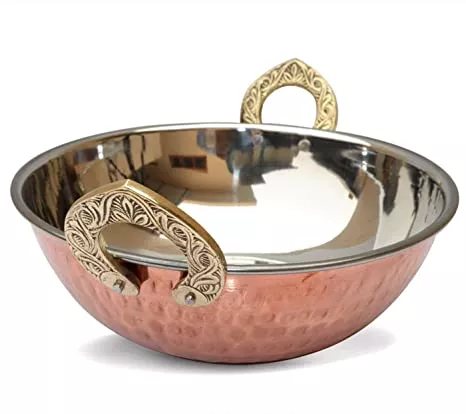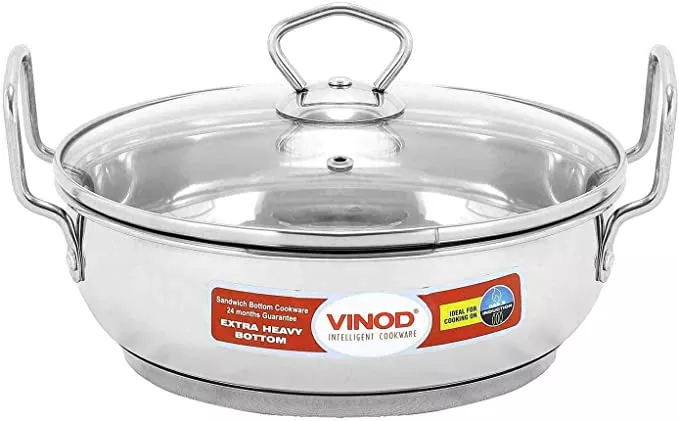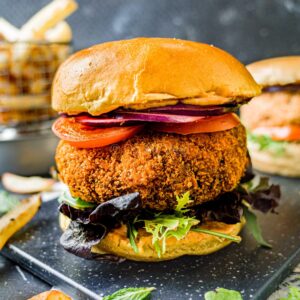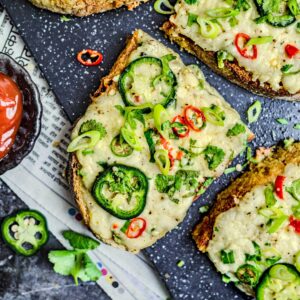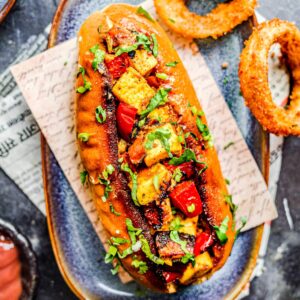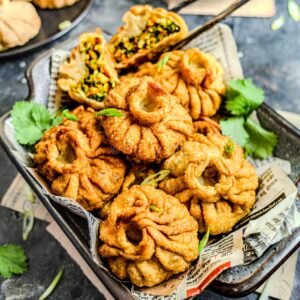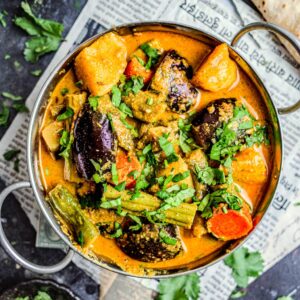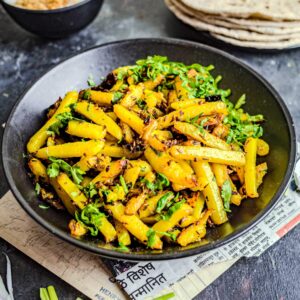Palak Paneer Dhaba Style Curry
The real star of Indian vegetarian food is undoubtedly paneer dishes. Unsurprisingly, you’ll find a plethora of recipes highlighting paneer on Oh My Veg, including methi malai paneer and Indo-Chinese sticky chilli paneer, to name only a few. The very first paneer recipe I shared was none other than this palak paneer dhaba style curry, back in 2021!
Since then, it’s gained quite a following. It’s a favourite among both my close family and my readers.
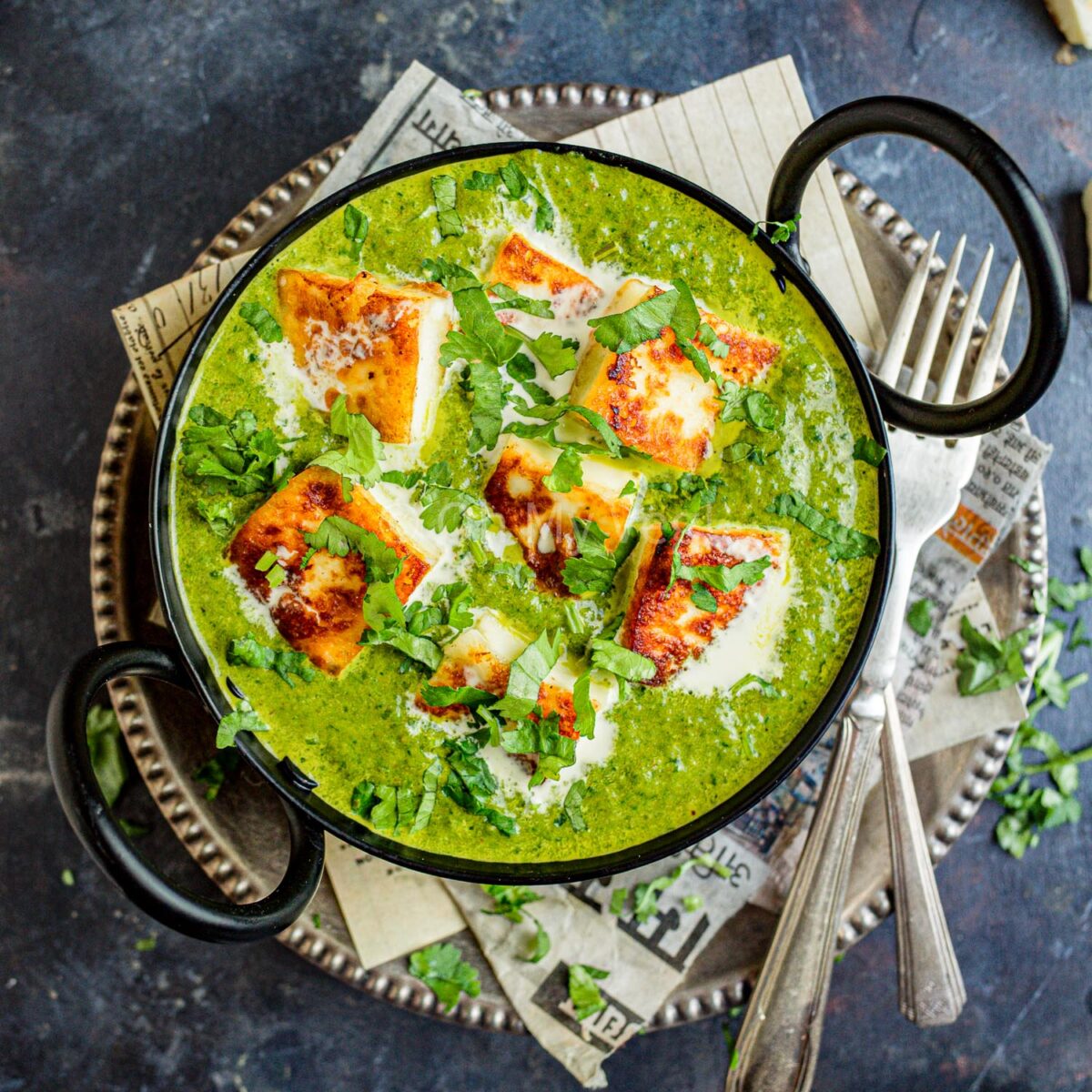
It’s easy to understand why this palak paneer dhaba style recipe is so beloved. The paneer, a hard Indian cheese, is rich, golden brown, and oh-so-creamy. And that sauce — It’s nutrient-dense, yes, but it’s also irresistibly good. Packed with punchy chili, earthy spinach, and warming spices, sautéed buttery garlic runs through the dish, while cream finishes it off on an indulgent note.
The best part? This palak paneer dhaba style recipe is a 30-minute recipe. You get all the scrumptious flavour without much time investment. Also, it’s an easy recipe — a one-pot dish with no fancy techniques, just basic cooking skills. Every time I whip this up, I can’t believe how good it tastes … especially paired with my pillowy, fluffy garlic and coriander naan.
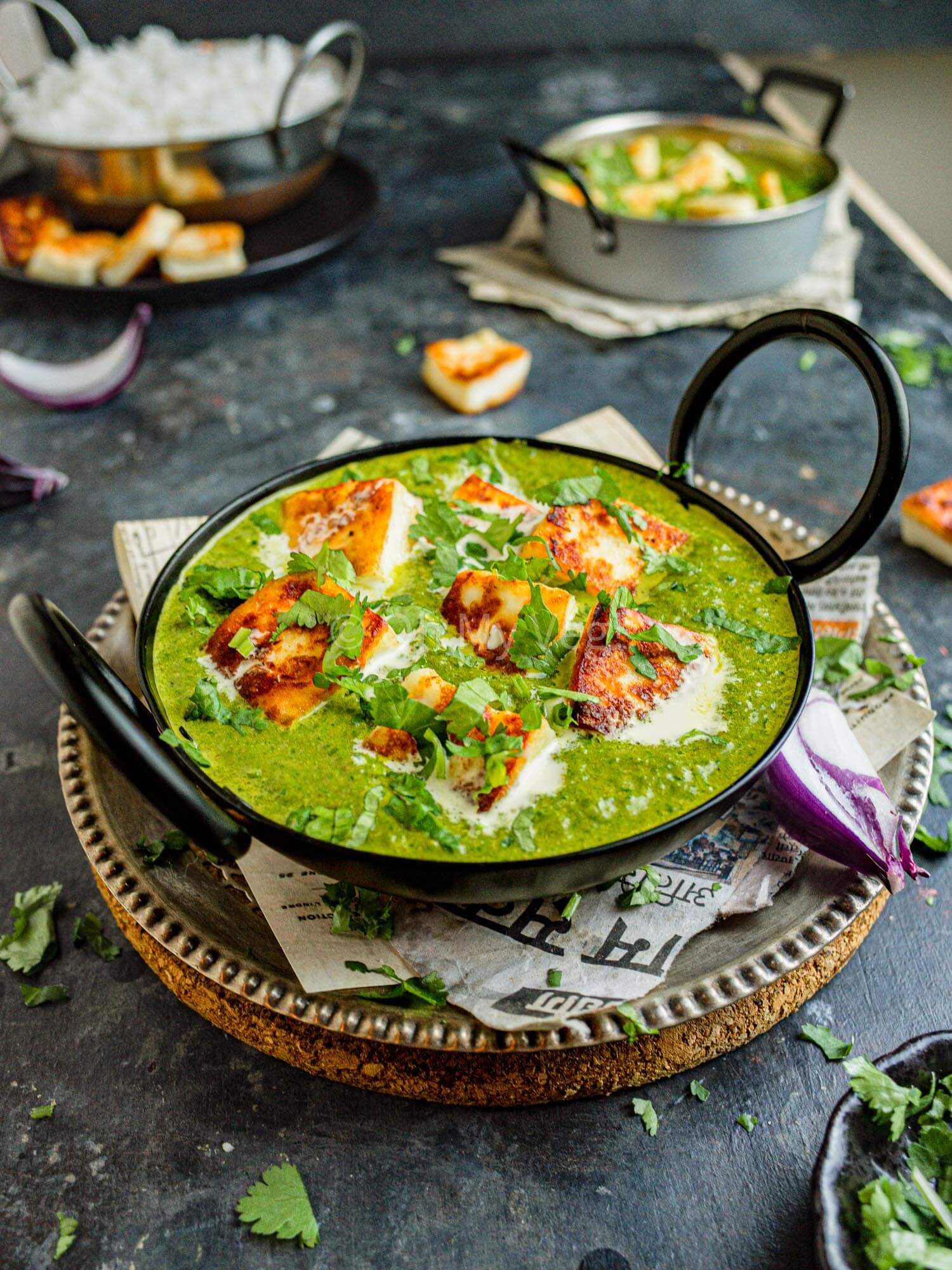
What is Palak Paneer, Dhaba Style?
Palak paneer is a beloved Indian curry made from paneer (a firm, non-melting variety of cottage cheese) and a creamy, velvety, nutrient-packed spinach-based curry.
Thanks to its impressive flavour profile and wholesome, filling ingredients, palak paneer has become one of the most popular vegetarian curries worldwide. Despite the complex spicing, the meal is simple: sautéed chunks of caramelized, golden-brown paneer simmered in a curry sauce made from onions, garlic, ginger, tomatoes, spinach, and spices.
Dhaba-style food refers to dishes served in Indian roadside restaurants, locally known as “dhabas” and frequented by road trippers, truck drivers, and hungry foodies. Dhaba food is rustic, wholesome, and flavour-packed — just like this palak paneer!
Palak Paneer vs Saag Paneer
You’ve likely seen saag paneer listed on British Indian takeaway menus. To say saag paneer is widespread in the U.K. is an understatement — In fact, it’s probably the most popular of all paneer dishes. It’s also sometimes called paneer saagwala.
But what’s the difference between the two dishes?
Both dishes originate from India, so let’s delve into the etymology. In Hindi, “saag” means a mix of green leafy vegetables (commonly including spinach, along with mustard, fenugreek, etc.) On the other hand, “palak” explicitly means spinach alone. Therefore, saag paneer can technically be made from any leafy greens, while palak paneer is always made from spinach. Furthermore, saag paneer is more rustic — chopped greens — while the sauce of palak paneer is silky smooth and puréed.
The confusion arises because, in the U.K., BIR (British Indian Restaurants)-style saag paneer is made from spinach, not mixed greens. Still, each has a distinctive appearance and flavour. This curry I’m sharing today is authentic and traditional Indian style.
Where is Palak Paneer From?
Palak paneer, saag paneer, and paneer saagwala all originate in India. More specifically, the dishes are a speciality of North Indian cuisine, which typically embraces thick, creamy, and aromatic curries.
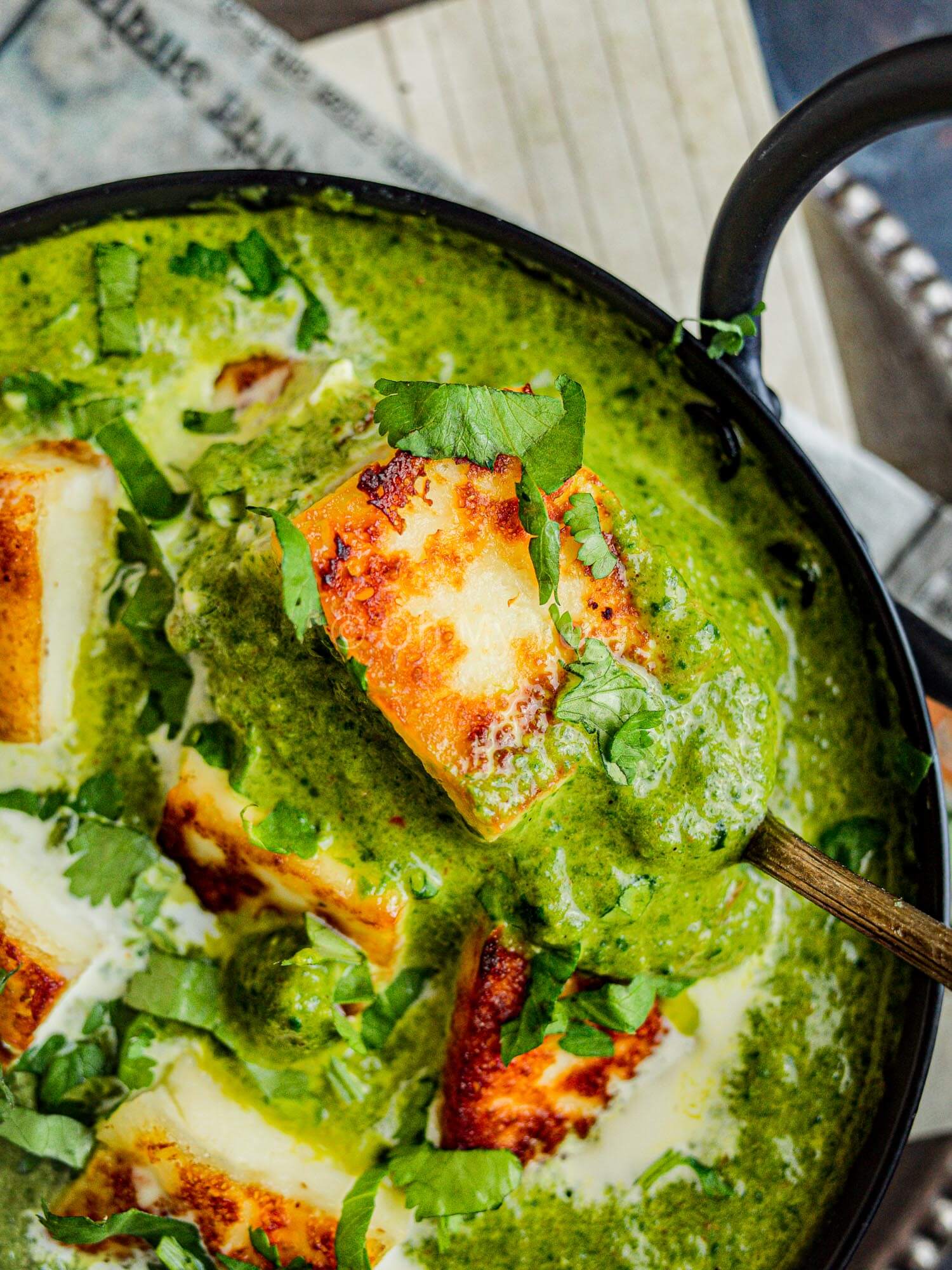
Ingredients for Palak Paneer Dhaba Style
- Neutral oil is used to fry the paneer before it’s added to the curry. This step gives a lovely caramelized buttery taste to the cheese.
- Paneer is the star of this dish. Known as “Indian cottage cheese,” homemade paneer is easy to make at home. It has a mild taste and rubbery texture, but perhaps most uniquely, it doesn’t melt when cooked. Replace paneer with homemade tofu to make vegan palak paneer.
- Butter and ghee give a rich butteriness to this easy palak paneer curry. However, if you’re following a plant-based diet, replace it with sunflower oil.
- Green chilli is surprisingly fragrant, with herbal undertones. It adds depth to the curry.
- Garlic is my favourite combination with spinach. It lends a soft and buttery flavour with nuanced notes of punchy spiciness.
- Onion adds body to our curry sauce and provides subtle sweetness. This sweetness complements the spicier flavours.
- Ginger-garlic paste is a must-have for Indian curries, this one included! I always use homemade ginger-garlic paste.
- Tomato is a source of natural umami, adding depth to this homemade paneer.
- Nutmeg powder is my secret ingredient! It adds a nutty, earthy, and slightly sweet flavour profile to the curry.
- Spinach provides that gorgeous green colour, essential vitamins, and the robust savoury flavour we all love.
- Spice powders like coriander powder, turmeric powder, red chilli powder, and cumin powder all build up the depth of this recipe.
- Salt is a must for any recipe. It heightens all the flavours you’ve built up.
- Sugar acts to enhance and balance out the seasonings.
- Garam masala is a finishing touch, adding warmth, fragrance, and layers to our plate.
- Kasuri methi, known as dried fenugreek leaves, is my second secret ingredient, and they are ESSENTIAL! The hint of earthy, bitter, and nutty herbs is perfect to finish.
- Double cream adds so much richness and indulgence. It also thickens our silky curry gravy and mellows the spice levels. If you have a lower spice tolerance, you can add more cream. Replace with cashew cream or non-dairy cream for a vegan version.
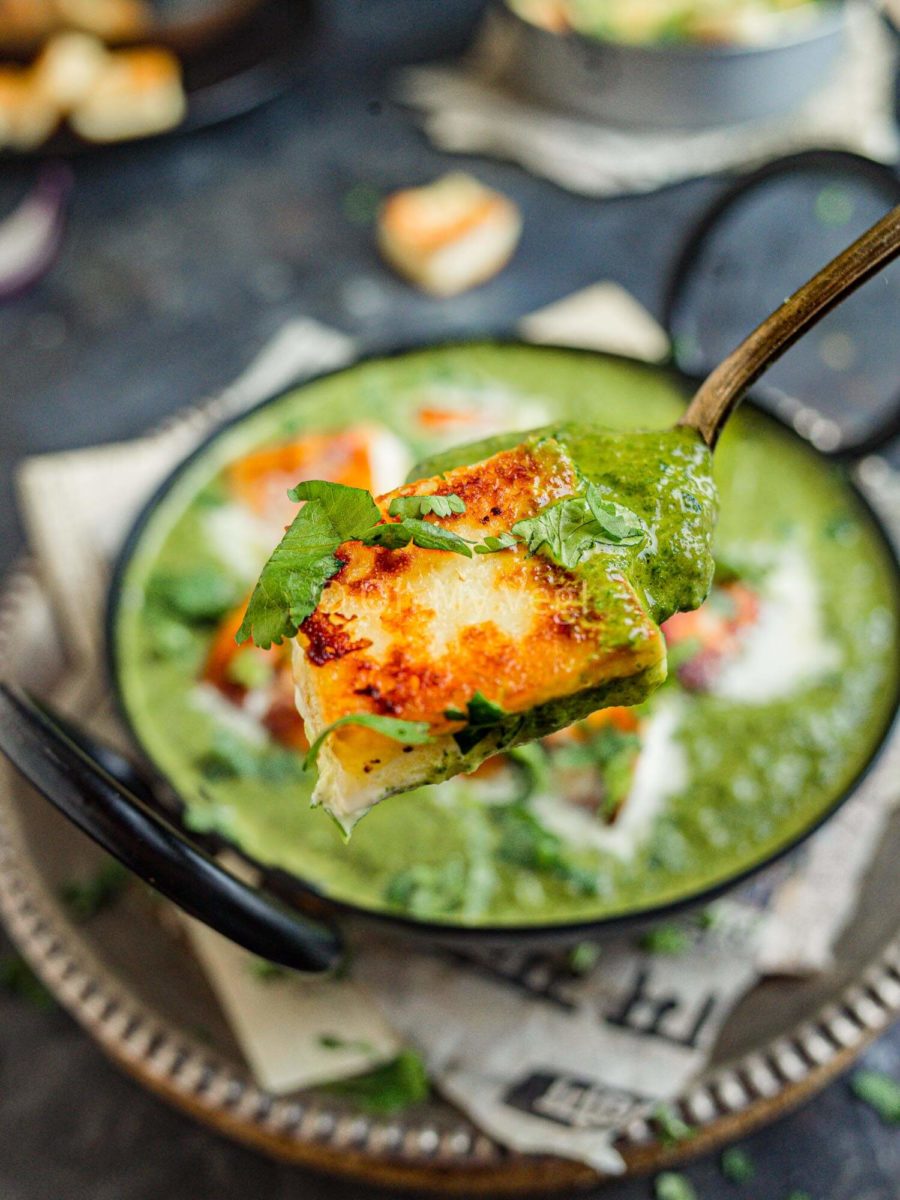
How to Make Palak Paneer Dhaba Style
- Fry the paneer. Heat oil in a non-stick frying pan and gently cook the paneer cubes until golden on all sides. Set aside.
- Sauté the curry ingredients. Heat butter and ghee in a kadai. Gently sauté onions, garlic, green chilis, tomatoes, homemade ginger-garlic paste, spinach, and powdered spices.* Turn off the heat and wait to cool.
- Purée the curry gravy. Using a handheld immersion blender (or blender of your choice), purée the curry sauce with water until it’s smooth.
- Season to finish. Add the sauce back into your kadai and season with salt, sugar, garam masala, kasuri methi, and cream. Simmer to heat through, then serve.
My number one game-changer for the best palak paneer dhaba style is sauteeing the spinach instead of blanching it. Sauteeing removes excess water from the spinach — but maintains that gorgeous deep green colour. It’s also faster since sauteeing additional ingredients like onions, garlic, and tomatoes with spinach saves prep time and cooking time.
Variations on this Paneer and Spinach Curry
- Palak paneer with frozen spinach is an economical and accessible way to make effortless spinach curry if fresh spinach isn’t available. Chopped or whole frozen spinach is suitable; use the same quantity, or slightly more, than fresh spinach. It can be cooked directly from frozen or thawed in the microwave.
- Palak paneer with tofu is an excellent vegan alternative to the traditional curry. Tofu is similar to paneer — it’s mild and actively absorbs the intense flavours of the sauce. Opt for extra firm tofu (homemade tofu is best!).
- Palak paneer with yoghurt is how I make my dhaba-style palak paneer. It’s a delicious variation with slightly tangy notes.
- Palak paneer with canned spinach/ tinned spinach is another affordable way to make this recipe.
- Palak paneer without cream will taste spicier. Are you following a vegan lifestyle? You can replace cream with cashew or dairy-free cream for vegan palak paneer.
- Palak paneer without onion and garlic is perfect for Jains or fasting days when you need meals without onion and garlic. Skip both ingredients and add a pinch of asafoetida when frying off the powdered spices. The gravy will be slightly thinner, as it lacks the body of the onions.
- Palak paneer without tomato is a simple adjustment. Leave out the tomato and replace it with a small spoon of yoghurt to replace the sour flavour.
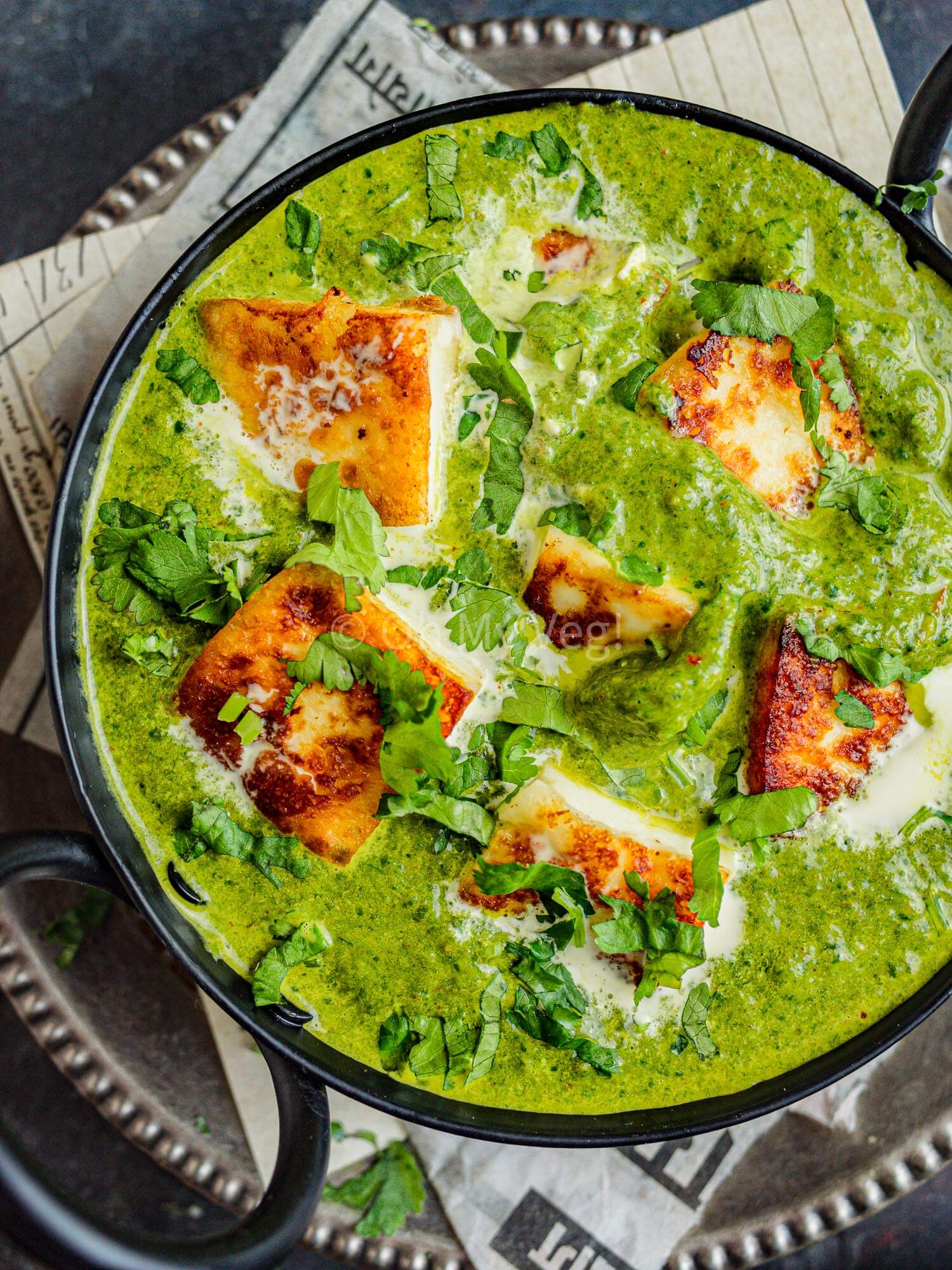
What to Serve with Palak Paneer Dhaba Style
- Palak paneer and roti is the ultimate comfort-food combination for households across North India. Using the steaming hot, buttered roti to scoop up the rich chunks of paneer and creamy, spinach-packed gravy is heavenly.
- Palak paneer and rice is my go-to when I don’t feel like making roti, paratha, or naan. Sometimes, I make both bread and rice! Steamed rice will taste wonderful with this Indian spinach and paneer curry (I like to use sona masoori rice or ambe mohar rice), but the best combination is palak paneer with jeera rice (cumin fried rice). The aroma of the cumin seeds and ghee is unbeatable.
- Palak paneer and naan is true restaurant-style food. My homemade garlic and coriander naan is one of my most beloved recipes on the blog, and for good reason. Nothing beats mopping up curry with a fluffy, pillowy, slightly charred fresh naan.
- Palak paneer with paratha is yet another mouth-watering combination. The multi-layered flatbreads allow the rich flavours of this recipe to sing. I recommend triangle parathas for beginners (it’s the easiest method) and lachha parathas for enthusiasts.
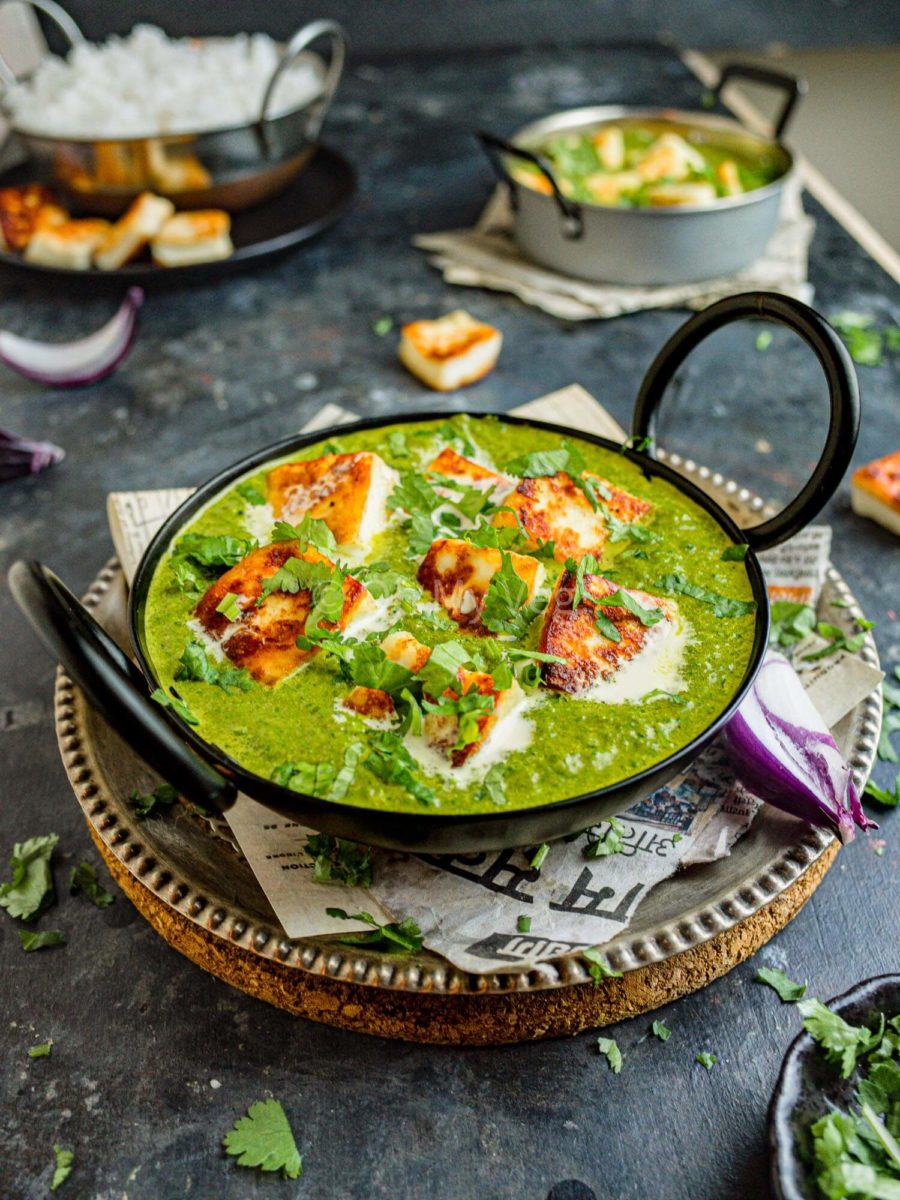
Reheating Palak Paneer Dhaba Style
Got leftovers? You might be wondering — can palak paneer be reheated? The answer? Absolutely! Although this curry tastes best fresh, there’s no harm in reheating the dish. You can refrigerate palak paneer in an airtight container for up to three days, then reheat it on the stovetop.
However, overcooked spinach can taste bitter — so heat the dish gently, and if you’re cooking the curry ahead of time, undercook the spinach first.
I don’t suggest reheating palak paneer in the microwave because the sauce can become too dry. If you choose this option, add extra water to the dish before reheating to loosen it up.
Can Palak Paneer be Frozen?
Yes! This palak paneer dhaba style recipe freezes exceptionally well — Meaning that freezing compromises neither the taste nor texture of the curry. Wait for the curry to cool completely, then use a freezer-safe container and freeze for up to three months.
You can heat the curry directly from frozen or leave it to thaw. When reheating on the stovetop or the microwave, stir the dish frequently and ensure it’s piping hot before serving.
This Recipe Is…
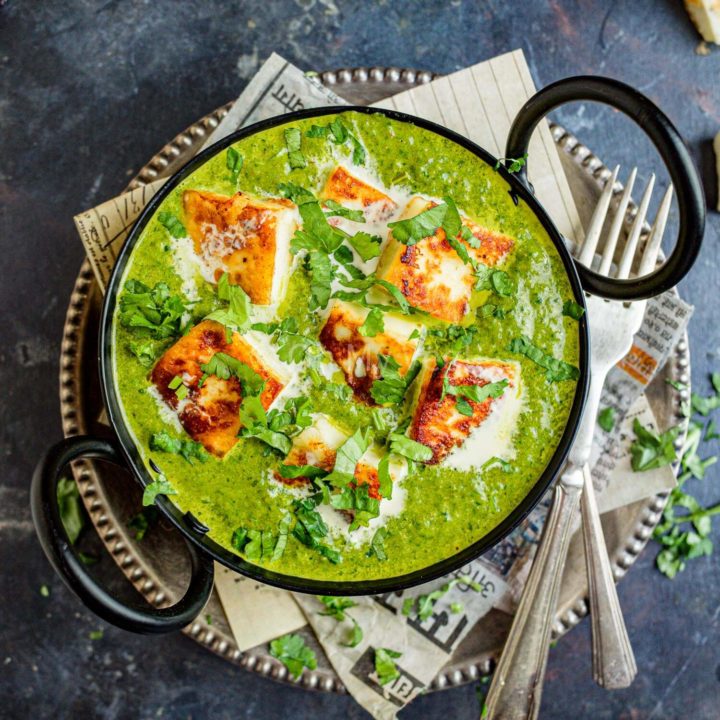
Palak Paneer Dhaba Style Curry
Palak paneer dhaba style is delicious, quick, and easy. Fried paneer cubes in a garlicky, spinach-packed, creamy curry sauce? Mouth-watering.
Ingredients
- 1 tbsp Neutral Oil of choice
- 225g Paneer, cut into chunks
- 1 tbsp Butter
- 1 tbsp Ghee
- 2 Green Chillis, roughly chopped
- 7 Garlic Cloves, crushed
- 60g Onion, roughly chopped
- 1/2 tsp Ginger Garlic Paste
- 50g Fresh Tomato, roughly chopped
- 1/4 Ground Nutmeg Powder
- 160g Fresh Baby Spinach, roughly chopped
- 1/4 tsp Turmeric Powder
- 1 tsp Coriander Powder
- 1/2 tsp Red Chili Powder
- 1/2 tsp Cumin Powder
- 200ml Water
- Sea Salt, to taste
- 1/2 tsp Sugar
- 1/4 tsp Garam Masala
- 2 tbsp Double Cream
- 1/2 tsp Kasuri Methi (Dried Fenugreek Leaves)
- Fresh Coriander/Cilantro, finely chopped, to serve (optional)
Instructions
- Fry the paneer. Heat oil in a non-stick frying pan and gently cook the paneer cubes until golden on all sides. Set aside.
- Sauté the curry ingredients. Heat butter and ghee in a kadai (or the same non-stick frying pan) over medium flame. Gently sauté onions, garlic, and green chilis until they smell aromatic. Next, add the ginger-garlic paste and mix well.
- Now add the tomatoes and nutmeg to the pan. Cook until the tomatoes are slightly softened, before adding the chopped spinach, turmeric powder, coriander powder, red chilli powder, and cumin powder. Cook, stirring frequently, until the spinach has wilted and the spices are no longer raw. Be careful not to burn the dry spices — add a splash of water if necessary. Turn off the heat and cool.
- Purée the curry gravy. Using a handheld immersion blender (or blender of your choice), purée the curry sauce with water until it’s smooth.
- Season to finish. Add the sauce back into your pan and season with salt, sugar, garam masala, and cream. Simmer to heat through, but don't overcook*. At the last moment, crush kasuri methi between your palms and add to the finished dish, then garnish with freshly chopped coriander and extra cream to serve.
Notes
* Overcooked spinach can become bitter, so it's essential you only heat the curry through, not cook it further.
If this curry is too spicy, please add extra cream to the pan and reduce the quantity of chili powder.
Recommended Products
As an Amazon Associate and member of other affiliate programs, I earn from qualifying purchases.
Nutrition Information:
Yield: 4 Serving Size: 1Amount Per Serving: Calories: 315Total Fat: 26gSaturated Fat: 13gTrans Fat: 1gUnsaturated Fat: 10gCholesterol: 63mgSodium: 651mgCarbohydrates: 9gFiber: 2gSugar: 4gProtein: 13g
Nutrition information isn’t always accurate.




